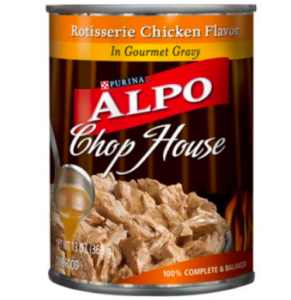
How dogfooding sells your platform
We don’t like the term either, but it it does describe a super useful practice: Using your own products, services and expertise for your own company.
Makes sense, right?
If you make beautiful sales funnels, your site should have beautiful sales funnels. If you provide content marketing, you should write blogs like this one. If you serve beautiful and unique ad templates, you should advertise using your own beautiful unique ad templates. Make sure the marketing team gets it!
Rather than our standard case study format, we decided to show you a timeline of corporate dogfooding practices, as the word evolved through technological history.
1981 – Apple removes all typewriters from its company in an effort to prove an electronic universe is the future of the written word.
1990’s – By 1991, in general, Microsoft is mostly running on its own Windows operating system, virtually “self-hosting.” It is “called out” for using Unix for email. It switches.
 1999 – Hewlett-Packard’s employees refer to a project using its own products as “Project Alpo.”
1999 – Hewlett-Packard’s employees refer to a project using its own products as “Project Alpo.”
2000 –Mozilla does, too.
2007 – Jo Hoppe, the CIO of Pegasystems uses “drinking our own champagne” instead. It does not catch on.
2009 – Toney Scott, the new CIO of Microsoft, argues the term should be changed to “ice-creaming,” since their products are “like ice cream to its customer,” even though the phrase sounds vaguely disturbing. It also does not catch on.
2011 – YouTube allows users to choose a Creative Commons license, instead of a commercial one, followed by the message (Shh! – Internal Dogfood), posted on all products internally tested.
2012 – “Self-hosting” begins to replace “Dogfooding” at companies who upgrade their systems every night to their latest software iterations.
2016 – Developers of IBM’s mainframe operating systems, a conservative crowd, still use the term, “eating our own cooking,” the go-to-phrase for people who are bothered by the dog food aspect.
The odd thing about dogfooding, the word, is that it seems to imply something unappealing about your company’s products: Before you actually used it yourself, It may only have been fit for a dog.
Plus, are those “dogs” your customers?
But at the end of the day, dogfooding provides a basic answer to a visceral issue: If you won’t eat it why should they?
Why should clients be served anything less than you would want to be served in a SaaS platform?
In our aesthetic hearts, we would rather use the metaphor about Escher drawing his own hands drawing his hands. Or explain how Bach’s fugues mathematically circle back over themselves like Godel’s math theorems.
But we have “dogfooding.” Everyone knows what it means.
So yeah. We eat our own dog food.
You should, too.






Comments are closed.